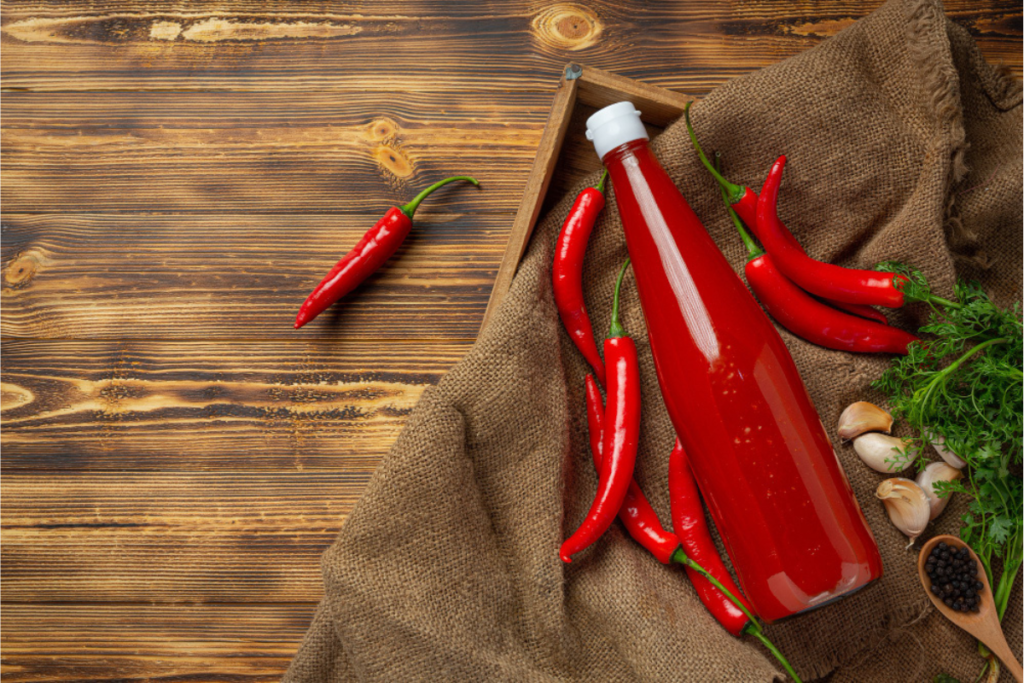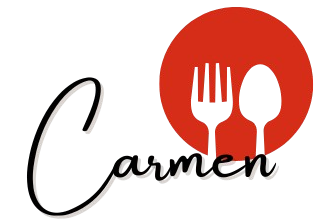
Tabasco sauce has a longstanding reputation as one of the world’s most beloved hot sauces. Its distinctive tang and mild-to-moderate spiciness have made it a staple in households globally. But exactly how many Scoville Heat Units (SHU) does Tabasco pack, and what does this mean in the world of hot sauces?
To understand Tabasco’s place on the Scoville scale, it’s essential to dive into the brand’s history, the various types of Tabasco sauces available, and how it compares to other popular hot sauces. For context on how it compares with other well-known sauces, see How Many Scovilles is Sriracha?. If you’re interested in even spicier options, take a look at How Hot is a Ghost Pepper?.
Origins of Tabasco and the Introduction of the Scoville Scale
Tabasco’s journey began in 1868 on Avery Island, Louisiana, where Edmund McIlhenny created the first batch using Tabasco peppers, salt, and vinegar. Over the years, Tabasco has maintained its classic recipe, using naturally aged peppers to bring out the depth and complexity in its flavor. The original Tabasco sauce delivers a moderate heat that makes it versatile for both spicy food enthusiasts and those new to hot sauces.
The Scoville scale, developed by chemist Wilbur Scoville in 1912, measures the spiciness of peppers and hot sauces based on capsaicin concentration—the chemical that produces the heat sensation. Capsaicin content is diluted until the spiciness is no longer detectable to give the SHU rating, which ranges from mild to ultra-hot. The scale has become an essential tool for measuring heat, making it easy to gauge how different sauces like Tabasco compare.
Scoville Ratings of the Classic Tabasco Sauce: Original Red
The Original Red Tabasco sauce has a Scoville rating of 2,500 to 5,000 SHU. This rating places it in the moderate range, offering a noticeable heat without overwhelming the palate. Tabasco’s heat level is balanced by a tangy vinegar base that adds flavor without overpowering other ingredients in a dish.
- Scoville Rating: 2,500 – 5,000 SHU
- Flavor Profile: Tangy, acidic, with a mild to moderate spiciness that complements various foods.
This moderate heat has made Original Red Tabasco a versatile condiment, widely used in cocktails like Bloody Marys, seafood dishes, eggs, and soups. Its Scoville rating is ideal for adding a kick to food without masking other flavors.
Tabasco’s Hottest: Scorpion Pepper Tabasco
For those seeking an intense heat experience, Scorpion Pepper Tabasco delivers one of the highest heat levels in the Tabasco lineup, with a Scoville rating reaching up to 35,000 SHU. This sauce features scorpion peppers, which are among the hottest peppers in the world, and is designed for those who appreciate extreme heat.
- Scoville Rating: Up to 35,000 SHU
- Key Ingredients: Scorpion peppers provide a fierce, lingering heat with a hint of sweetness.
- Flavor Profile: Fruity and sharp, with an intense spiciness that builds and lasts.
Scorpion Pepper Tabasco is ideal for recipes that require significant heat, such as spicy salsas, BBQ marinades, and fiery chili. Its unique flavor and heat level make it perfect for adventurous spice lovers who enjoy sauces with a high Scoville rating.
Other Varieties of Tabasco and Their Scoville Ratings
In addition to Original Red and Scorpion Pepper, Tabasco offers a variety of sauces, each with a unique flavor profile and level of heat:
- Tabasco Green Jalapeño: This mild variety ranges from 600 to 1,200 SHU, making it ideal for those who prefer a gentle heat. Its tangy flavor complements salads, tacos, and scrambled eggs without overwhelming the palate.
- Tabasco Chipotle: A smoky sauce with a Scoville rating of 1,500 to 2,500 SHU, this variety offers a mild-to-moderate spice level and rich, smoky notes. It’s perfect for BBQ dishes, burgers, and slow-cooked meats, adding depth without intense heat.
- Tabasco Habanero: For those looking for a fruity yet hot sauce, Tabasco Habanero offers a Scoville range of 7,000 to 8,000 SHU. This variety features flavors of mango, papaya, and banana alongside habanero peppers, making it suitable for tropical dishes, grilled meats, and seafood.
Understanding the Scoville Scale
The Scoville scale measures capsaicin concentration, with a higher Scoville rating indicating more intense heat. Initially, the SHU was determined through human testing, where pepper extract was diluted until participants could no longer detect heat. Today, Scoville ratings are more accurately determined using high-performance liquid chromatography (HPLC), which measures capsaicin concentration directly.
The Role of Capsaicin in Determining Scoville Ratings
Capsaicin, the active compound in chili peppers, binds to receptors on the tongue and creates a burning sensation. This reaction varies depending on the capsaicin level, which is why some peppers and hot sauces, like the Ghost Pepper or The Last Dab, can reach extreme Scoville ratings. The Scoville scale is essential for consumers looking to understand and compare the heat levels of different sauces, like Tabasco.
Comparing Tabasco’s Scoville Rating with Other Popular Hot Sauces
Tabasco’s various Scoville ratings position it differently when compared to other hot sauces. Here’s how Tabasco measures up against some popular hot sauces:
- Frank’s RedHot: 450 SHU – A mild sauce frequently used for buffalo wings.
- Sriracha: 2,200 SHU – Known for its blend of spice and sweetness, often used in Asian dishes.
- Tabasco Original: 2,500-5,000 SHU – Moderate heat with a vinegar tang, versatile in many cuisines.
- Ghost Pepper Hot Sauce: 1 million SHU – Extreme heat far surpassing Tabasco’s intensity.
These comparisons highlight Tabasco’s position as a moderate option, suitable for both everyday use and those seeking a manageable level of spice.
The Flavor Profiles and Culinary Uses of Different Tabasco Varieties
Each Tabasco variety offers distinct flavors and culinary applications:
- Original Red: Known for its vinegary tang and moderate heat, it’s ideal for Bloody Marys, gumbo, and seafood.
- Scorpion Pepper: With its intense heat and fruity profile, this sauce pairs well with hearty foods like chili, wings, and BBQ.
- Green Jalapeño: Mild and fresh, making it a great topping for Mexican dishes, eggs, and salads.
- Chipotle: Smoky and moderate, perfect for adding depth to burgers, slow-cooked meats, and BBQ sauces.
- Habanero: Fruity with significant heat, best suited for Caribbean dishes, grilled chicken, and tropical salsas.
FAQs about Tabasco Sauce Scoville Ratings
1. What is the hottest Tabasco sauce?
The Scorpion Pepper Tabasco is the hottest, with a Scoville rating up to 35,000 SHU, designed for those who enjoy intense heat.
2. Why does the Scoville rating vary for the same sauce?
Variations in pepper crops can lead to slight differences in capsaicin levels, resulting in a range of Scoville ratings.
3. Is Tabasco sauce hotter than Sriracha?
Yes, Tabasco Original typically has a higher Scoville rating, between 2,500-5,000 SHU, compared to Sriracha’s 2,200 SHU.
4. Can I cook with Scorpion Pepper Tabasco safely?
Yes, but it should be used sparingly due to its intense heat. Just a few drops can add a significant kick to recipes.
5. Are there any health benefits to consuming Tabasco sauce?
Capsaicin, found in Tabasco, has been associated with benefits like improved metabolism, pain relief, and better digestion.
Conclusion: Tabasco’s Place on the Scoville Scale and Choosing the Right Variety for You
Tabasco sauce provides a range of heat levels, from the mild Green Jalapeño to the fiery Scorpion Pepper. Its varied Scoville ratings make it an accessible choice for both new and seasoned hot sauce enthusiasts. Whether you’re looking to add a subtle kick to breakfast or a serious heat boost to dinner, there’s a Tabasco sauce for every preference.
For more on the history and evolution of this iconic brand, explore The Tabasco Sauce Story, and see how Tabasco continues to be a favorite among hot sauce lovers worldwide.
